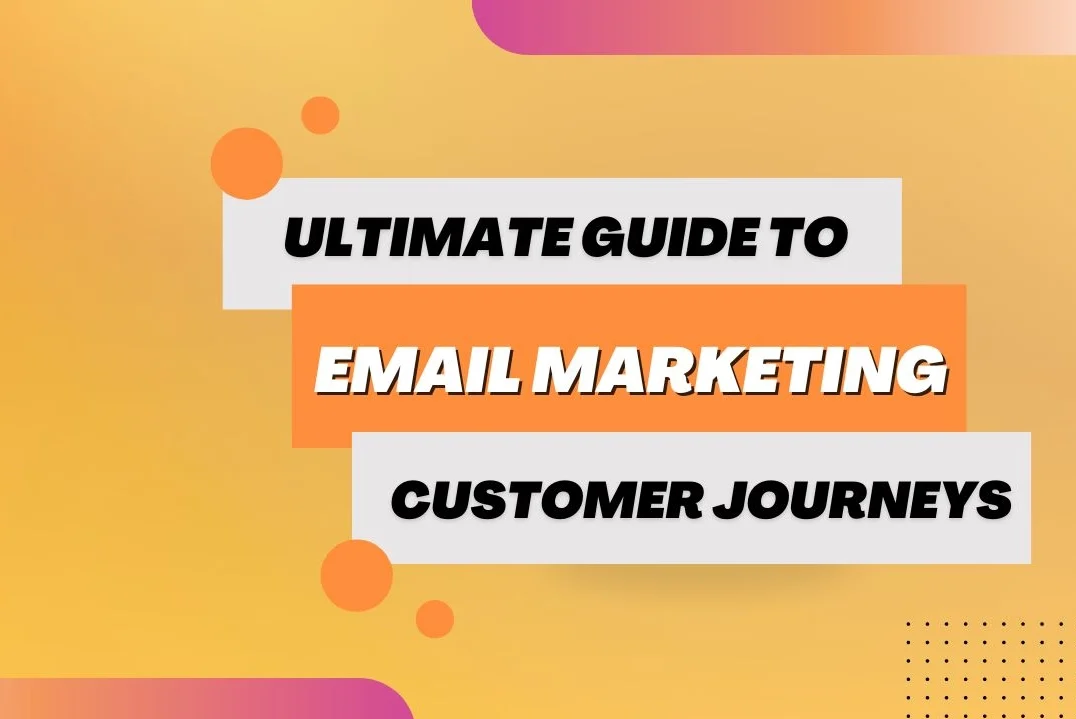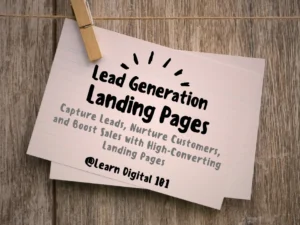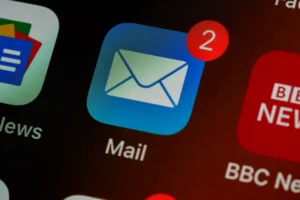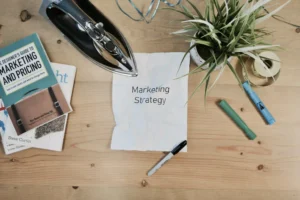Has social media overshadowed email marketing? Don’t be fooled! Email marketing remains a cornerstone of digital marketing, but to stand out in today’s crowded landscape, we need a fresh approach.
The sheer volume of emails bombarding inboxes today demands more from marketers than ever before. To stand out, we need to understand the entire customer journey and craft email campaigns that resonate with subscribers at every touchpoint.
Imagine a strategic roadmap that guides users from simple brand awareness to becoming vocal advocates. That’s the power of the email marketing customer journey!
At its core, the email marketing customer journey allows marketers to foster deeper, more meaningful relationships with their audience. It’s not about bombarding subscribers with emails; it’s about sending the right message, at the right time, to the right person. By doing so, you’re not just selling a product or service; you’re creating an experience that resonates with your audience, making your brand memorable and your offerings more appealing.
This journey isn’t a one-size-fits-all path. It’s unique to each brand and its audience, requiring a nuanced understanding of your subscribers’ needs, preferences, and behaviors. By mastering the email marketing customer journey, you’re equipping yourself with the knowledge to craft campaigns that not only capture attention but also convert and retain customers.
So, whether you’re a seasoned marketer aiming to refine your strategies or a newcomer eager to make your mark, this guide will illuminate the intricacies of the email marketing customer journey, empowering you to create more impactful, engaging, and successful email campaigns.
Let’s embark on this journey together, exploring the core concepts that underpin successful email marketing strategies and delving into the tactics that can transform your campaigns from good to great.
Core Concepts of Email Marketing Customer Journey
What is an Email Marketing Journey?
An email marketing journey, like the award-winning campaign by Dollar Shave Club that introduced their razor subscription service with a humorous video, is a meticulously crafted narrative, unfolding through a series of emails that usher subscribers towards a predetermined goal, such as a first purchase or a free trial.
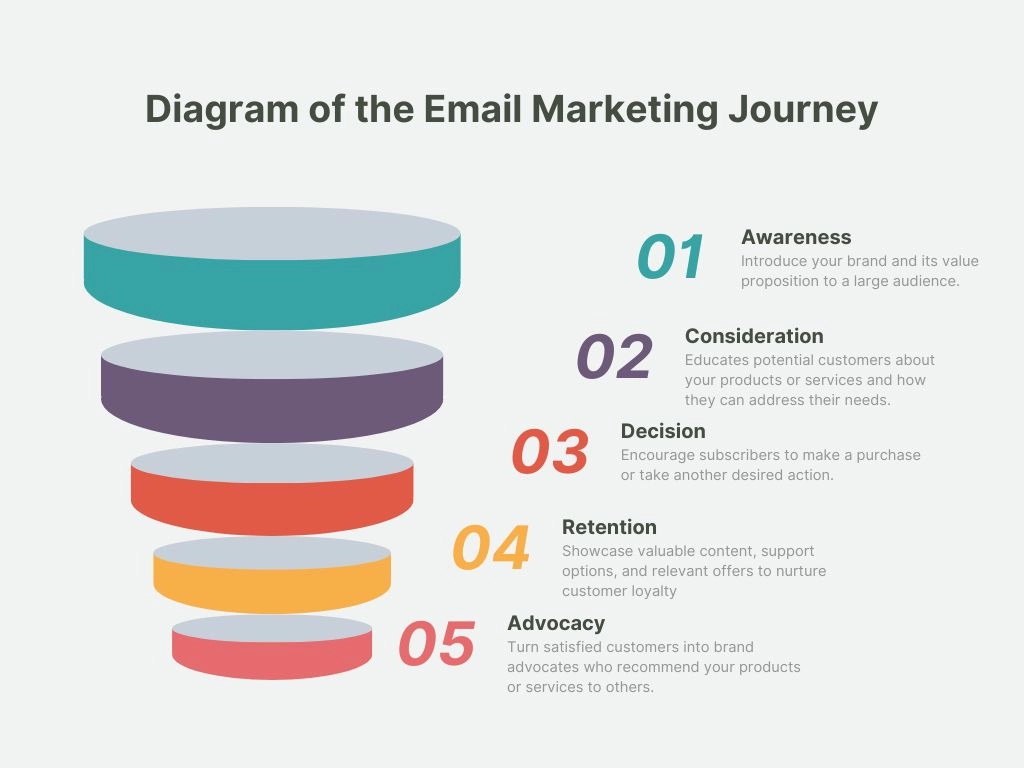
This goal could be a purchase, a download, or even simply a deeper understanding of your brand. But beyond these goals, successful journeys cultivate enduring brand loyalty and advocacy.
By strategically guiding users through this personalized experience, email marketing journeys transform passive subscribers into active participants, like Sephora’s Beauty Insider program that rewards members with points for purchases and exclusive access to new products, fostering long-term relationships.
The magic bullet of effective email marketing journeys is content that resonates deeply with subscribers at every touchpoint, like the personalized recommendations Netflix uses in their emails, suggesting new shows based on a subscriber’s viewing history.
By tailoring content to address their specific needs and interests at each stage, you keep them engaged and invested in your brand narrative.
How can you ensure your emails resonate with subscribers?
By delivering targeted content that addresses their specific needs and interests at every touchpoint in their brand journey. Here are the key components to making an email marketing journey effective.
1. Relevance: Ensuring that the content of each email resonates with the recipient, addressing their specific interests or pain points.
2. Timing: Sending emails at the most opportune moments, leveraging data and insights to reach subscribers when they are most receptive.
3. Personalization: Going beyond addressing recipients by name, personalization involves tailoring content to reflect the subscribers’ past interactions, preferences, and behaviors.
4. Engagement: Crafting emails that encourage interaction, whether through compelling calls to action, interactive content, or engaging storytelling.
5. Measurement: Continuously analyzing the performance of email campaigns to refine and enhance future interactions.
By understanding and implementing these core principles, and constantly analyzing data to optimize content and timing, digital marketers can craft email marketing journeys that not only captivate and educate subscribers but also cultivate enduring customer relationships.
Mapping the Email Marketing Journey
Creating an effective email marketing journey requires a detailed map that outlines each step of the subscriber’s path. This mapping process is not just about plotting emails, it’s about understanding the subscriber’s experience from initial contact to post-purchase engagement and beyond.
Want to create a roadmap for success? Here’s a step-by-step guide to mapping your email marketing journey:
- Defining Objectives: Establishing clear goals for each stage of the journey, ensuring that every email has a purpose that aligns with broader marketing objectives.
For example, a welcome email series might aim to educate new subscribers about your brand and its offerings, while a post-purchase email series might focus on driving repeat business.
- Segmenting Your Audience: Breaking down your subscriber list into smaller, more targeted groups based on demographics, behavior, or other relevant criteria.
Spotify, for instance, segments its audience based on listening habits and sends personalized emails with recommendations for new artists and playlists.
- Developing Content: Creating content that aligns with the objectives of each stage, ensuring that each email adds value and nurtures the subscriber’s relationship with the brand.
For example, an email in the consideration stage might offer a free downloadable guide on a relevant topic, while an email in the decision stage might highlight a limited-time discount.
- Setting Triggers: Determining the specific actions or timing that will trigger each email, ensuring that messages are delivered when they are most relevant and impactful.
An abandoned cart email can be triggered when a subscriber leaves items in their online shopping cart without completing the purchase.
- Choosing Tools: Selecting the right email marketing tools and resources that enable the creation, delivery, and analysis of your email campaigns.
There are many email marketing platforms available, such as Mailchimp and Constant Contact, that offer features to help you segment your audience, create email templates, and track your results.
This mapping process is foundational, providing a clear framework that guides the creation and execution of your email marketing campaigns, ensuring they resonate with subscribers and drive meaningful results.
Creating and Implementing an Email Journey
Developing an email marketing journey is akin to crafting a narrative where each email builds upon the last, guiding the subscriber towards a deeper engagement with your brand.
This section provides a practical tutorial on how to create this journey, emphasizing best practices to ensure its effectiveness.
Ready to craft an email marketing journey that converts? Here are the key steps involved:
1. Building the Foundation: Starting with a solid understanding of your audience, defining clear objectives for your email journey.
2. Designing the Flow: Crafting a sequence of emails that logically progresses, guiding subscribers from one stage to the next.
3. Content Creation: Developing compelling, relevant content for each email, ensuring it aligns with the objectives and needs of the audience at each stage.
4. Integration: Ensuring your email journey is seamlessly integrated with other marketing channels and customer touchpoints.
5. Testing and Optimization: Employing A/B testing and other optimization techniques to refine your emails and improve engagement and conversion rates.
By understanding and applying these core concepts, digital marketers can create effective and engaging email marketing journeys that resonate with subscribers, like the personalized birthday email campaigns that Ulta Beauty sends to their rewards members, driving engagement, conversions, and loyalty.
Deepening Customer Connections
Understanding the Relationship Between Email Marketing and Customer Journeys
Email marketing is not an isolated tool but a significant component of the broader customer journey. This relationship is symbiotic; Email marketing can inform and influence the customer journey, just as the journey can dictate the content and timing of your emails.
The customer journey encompasses every interaction a customer has with your brand, from the initial discovery to post-purchase experiences and beyond. Email marketing interweaves with this journey at multiple points, providing a direct line of communication that can educate, inspire, and motivate subscribers.
To align email marketing with the customer journey, consider the following:
1. Awareness: Introduce your brand and value proposition through informative and engaging emails that resonate with the audience’s needs and interests.
2. Consideration: Provide more detailed information, testimonials, and case studies to help subscribers evaluate your offerings.
3. Decision: Use persuasive content and strong calls to action to encourage subscribers to make a purchase or take another desired action.
4. Retention: Continue to engage customers post-purchase with helpful information, support, and relevant offers to foster loyalty and encourage repeat business.
5. Advocacy: Encourage satisfied customers to share their experiences and recommend your brand to others.
By understanding and integrating into the customer journey, your email marketing efforts can be more targeted, relevant, and effective, leading to deeper customer connections and improved business outcomes.
Segmentation and Personalization
Segmentation and personalization are key strategies to deepen customer connections through email marketing. By dividing your audience into distinct segments and tailoring your messages to these groups, you can enhance relevance, engagement, and ultimately, the effectiveness of your campaigns.
Effective segmentation involves categorizing your audience based on shared characteristics or behaviors, such as:
1. Demographic Segmentation: Grouping subscribers based on age, gender, location, or other demographic factors.
2. Behavioral Segmentation: Segmenting based on subscriber interactions with your brand, such as purchase history or website activity.
3. Psychographic Segmentation: Categorizing subscribers by interests, values, or lifestyle.
Personalization goes beyond segmentation, tailoring content to individual preferences and behaviors to create more meaningful and impactful email experiences. Techniques include:
1. Dynamic Content: Changing email content based on the subscriber’s segment or past behavior to ensure relevance.
2. Personalized Recommendations: Offering product or content recommendations based on the subscriber’s previous interactions or preferences.
3. Customized Messaging: Tailoring the message’s tone, language, and content to resonate with the specific segment or individual subscriber.
By employing segmentation and personalization, you can craft email campaigns that resonate more deeply with your audience, fostering stronger connections and driving better results.
Content Mapping and Automation
Content mapping and automation are critical in delivering timely, relevant, and engaging content throughout the email marketing journey. Content mapping involves planning your email content to align with different stages of the customer journey, ensuring that each message is relevant and adds value.
To effectively map your content:
1. Identify Key Stages: Define the key stages of your customer journey, from awareness to advocacy.
2. Determine Content Needs: Identify the types of content that will be most relevant and valuable at each stage.
3. Plan Your Sequence: Develop a content sequence that logically progresses, guiding subscribers through the journey.
Automation plays a vital role in executing your content map efficiently, allowing you to deliver the right message at the right time automatically. To leverage automation:
1. Set Triggers: Define specific actions or timing that will trigger each email, such as a welcome message after subscription or a follow-up email after a purchase.
2. Use Autoresponders: Employ autoresponders to deliver a series of emails automatically, based on the set triggers.
3. Monitor and Optimize: Continuously monitor the performance of your automated emails and make adjustments to improve engagement and effectiveness.
By strategically mapping and automating your email content, you can create more cohesive, engaging, and effective email marketing campaigns that resonate with your audience at every stage of their journey.
Identifying Touchpoints and Actions
In the intricate dance of email marketing, identifying the right touchpoints and crafting actions that resonate with your audience is crucial. These touchpoints are moments of interaction that can significantly influence the subscriber’s perception and actions. By recognizing and optimizing these touchpoints, you can enhance engagement and drive your audience toward desired outcomes.
To effectively identify and utilize touchpoints:
1. Customer Journey Analysis: Start by mapping out your customer’s journey to identify potential touchpoints. These could range from a welcome email after subscription to targeted follow-ups based on user behavior.
2. Behavioral Triggers: Utilize behavioral triggers to send emails that correspond to specific actions taken by your subscribers, such as browsing a particular product or abandoning a cart.
3. Lifecycle Stages: Tailor your emails to align with the different lifecycle stages of your customer, ensuring that each message is timely and relevant.
Once you’ve identified these touchpoints, designing actions becomes the next critical step:
1. Clear Calls to Action (CTAs): Ensure that each email has a clear, compelling CTA that guides subscribers toward the next step, whether it’s making a purchase, learning more about a service, or engaging with content.
2. Personalized Experiences: Craft emails that offer personalized experiences or solutions, addressing the subscriber’s needs or pain points identified through their interactions with your brand.
3. Engagement Opportunities: Provide opportunities for subscribers to engage further with your brand, whether through surveys, social media interaction, or exclusive events.
By effectively identifying and leveraging touchpoints and designing impactful actions, you can create a more engaging and dynamic email marketing journey that resonates with your audience.
Enhancing Strategy and Execution
Addressing Pain Points and Offering Solutions
A key to successful email marketing is not just to inform or promote but to solve. Addressing the pain points of your audience transforms your emails from mere communication to valuable resources, fostering trust and loyalty.
To address pain points effectively:
1. Understand Your Audience: Conduct surveys, analyze customer feedback, and monitor social media to gain insights into your audience’s challenges and needs.
2. Segmentation: Use segmentation to tailor your messages, addressing specific pain points for different audience segments.
3. Solution-Focused Content: Develop content that not only highlights these pain points but also offers clear, actionable solutions.
Showcasing examples of how your products or services solve these pain points can be incredibly persuasive, as seen in various case studies where brands have significantly improved their engagement and conversion rates by focusing on solutions rather than mere features.
Aligning Email Marketing with Customer Journey Stages
To maximize the impact of your email marketing, align your campaigns with the various stages of the customer journey:
1. Awareness Stage: Focus on informational content that introduces your brand and its values.
2. Consideration Stage: Offer more detailed content, such as how-to guides, webinars, or case studies, that showcases your expertise and the benefits of your offerings.
3. Decision Stage: Provide compelling reasons to choose your brand, such as customer testimonials, comparison guides, or exclusive offers.
4. Retention Stage: Continue to engage with valuable content, support, and incentives to foster loyalty and encourage repeat business.
5. Advocacy Stage: Encourage and empower satisfied customers to share their experiences and recommend your brand to others.
By aligning your email content with these stages, you ensure that your messages are always relevant and supportive of the subscriber’s journey, enhancing engagement and driving conversions.
| Customer Journey Stage | Goal | Content Types | Triggers | Automated Email Examples |
| Awareness | Increase brand awareness | Blog posts, social media content, ebooks, white papers | – Subscriber sign-up
– Website visit – Social media interaction |
– Send welcome email, introduce brand and products/services
– Welcome email, brand story, product introduction |
| Consideration | Nurture leads | Case studies, product demos, customer testimonials, free trials | – Content download
– Video view – Product link click |
– Send educational emails highlighting product/service benefits
– Product features overview, customer testimonials, free trial invitation
|
| Decision | Drive purchase | Discount offers, limited-time promotions, buying guides | – Add product to cart
– Browse product pages – Abandon website |
– Send promotional emails offering limited
-time discounts
– Cart abandonment reminder, limited-time discounts, buying guide
|
| Retention | Increase customer satisfaction | Product updates, customer care, loyalty programs | – First purchase
– Product usage – Customer feedback |
– Send thank you emails, provide support and rewards
– Purchase thank you, product updates, customer care |
| Advocacy | Encourage referrals | Referral rewards, user-generated content, brand ambassador program | – Product share
– Positive review – Repeat purchase |
– Send referral invitations, reward loyal customers
– Referral rewards, user testimonials, brand ambassador program |
Advanced Email Marketing Journey Topics
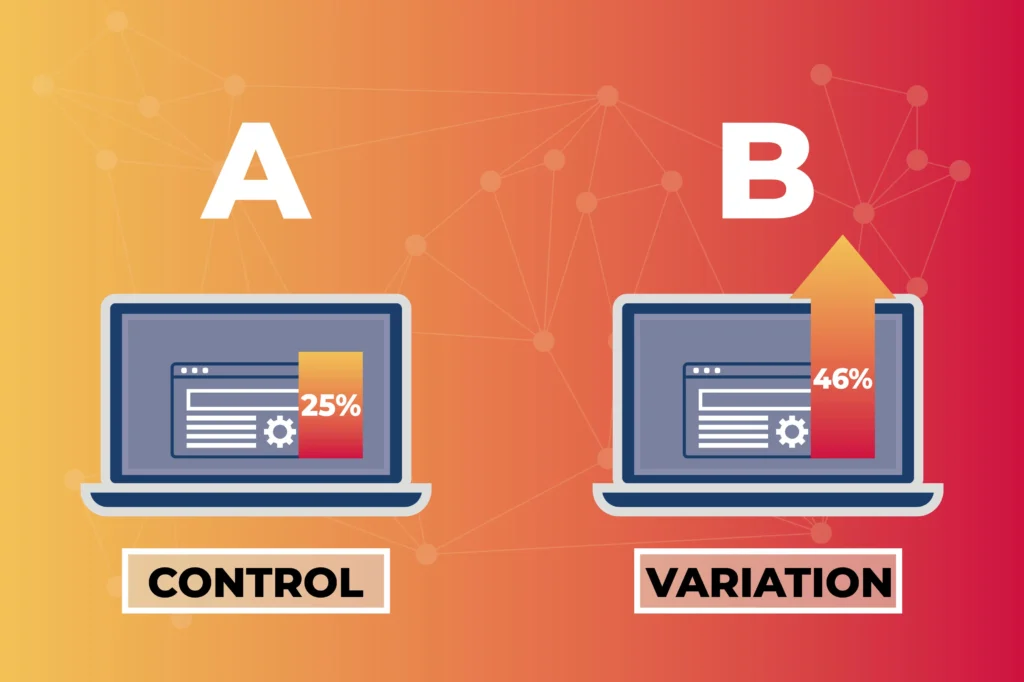
A/B Testing and Growth Hacking
In the dynamic realm of email marketing, A/B testing and growth hacking are invaluable strategies for refining your campaigns and achieving better outcomes. Through A/B testing, you can compare two versions of an email to see which one performs better, while growth hacking involves using innovative, low-cost strategies to grow your subscriber base and enhance engagement.
A/B Testing Essentials
1. Don’t be afraid to experiment! Test everything from subject lines and email greetings to CTAs and image placements. A/B testing allows you to scientifically determine which elements resonate most with your audience, so you can optimize your campaigns for maximum impact.
2. Scrutinize the data ruthlessly! Track key metrics like open rates, click-through rates, and conversion rates for each variation. Analyze the results to see which elements drive the most engagement and conversions.
3. Turn learnings into action! Integrate the insights you glean from A/B testing into your future campaigns. With every test, you’ll refine your understanding of what resonates with your audience, allowing you to craft ever-more-effective email marketing journeys.
Growth Hacking Strategies
1. Spark word-of-mouth magic! Incentvitize your loyal subscribers to become brand ambassadors by offering exclusive content, discounts, or early access to new products for referrals.
2. Showcase the power of social proof! Feature testimonials and user reviews from satisfied customers in your emails. Social proof builds trust and credibility, persuading subscribers to take the next step in their journey.
3. Don’t be afraid to get creative! Experiment with interactive email formats and gamification elements to boost engagement and set your brand apart. Remember, a little surprise and delight can go a long way in the crowded inbox.
Competitor Analysis in Email Marketing
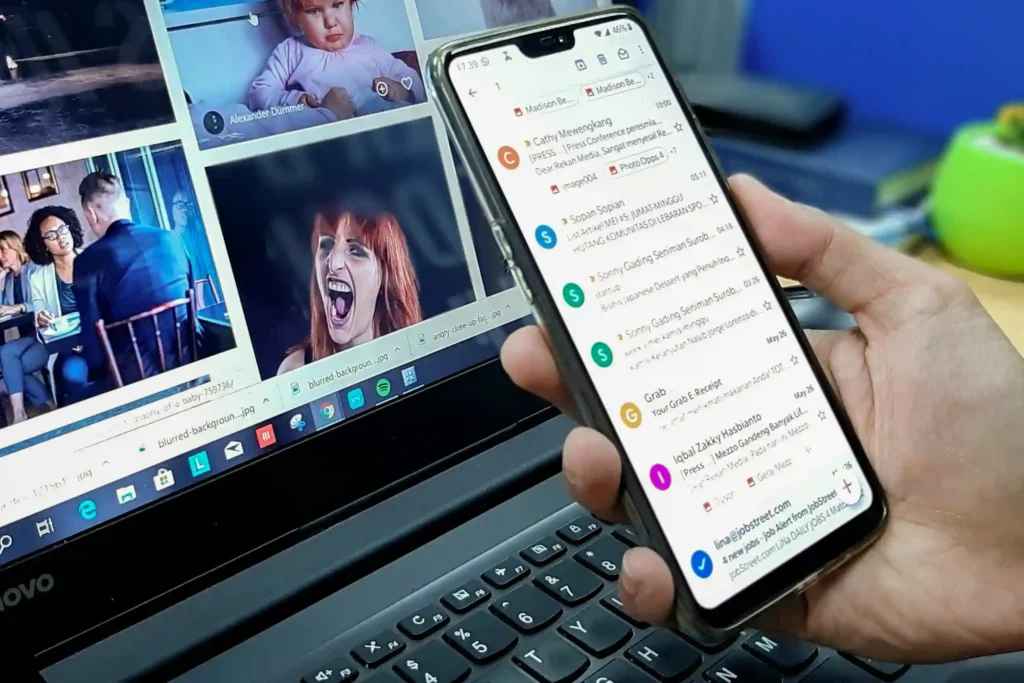
Benchmark against the best! Staying ahead in the competitive email marketing landscape requires competitor analysis. By closely studying what your top competitors are doing, you can glean valuable insights to inform your strategies and identify opportunities to innovate and stand out.
1. Know your competitive landscape! Carefully identify your top competitors in the email marketing space. Analyze their email marketing strategies to understand their strengths and weaknesses.
2. Get inside their inbox! Subscribe to your competitors’ email lists to analyze their messaging frequency, design, and the engagement tactics they use. Look for opportunities to learn from their successes and avoid their pitfalls.
3. Benchmark your performance! Carefully compare your email marketing strategies and performance against your competitors. This will help you identify areas where you can refine your approach and differentiate your brand.
Looking Ahead: Future Trends and Integration
Future Outlook in Email Marketing
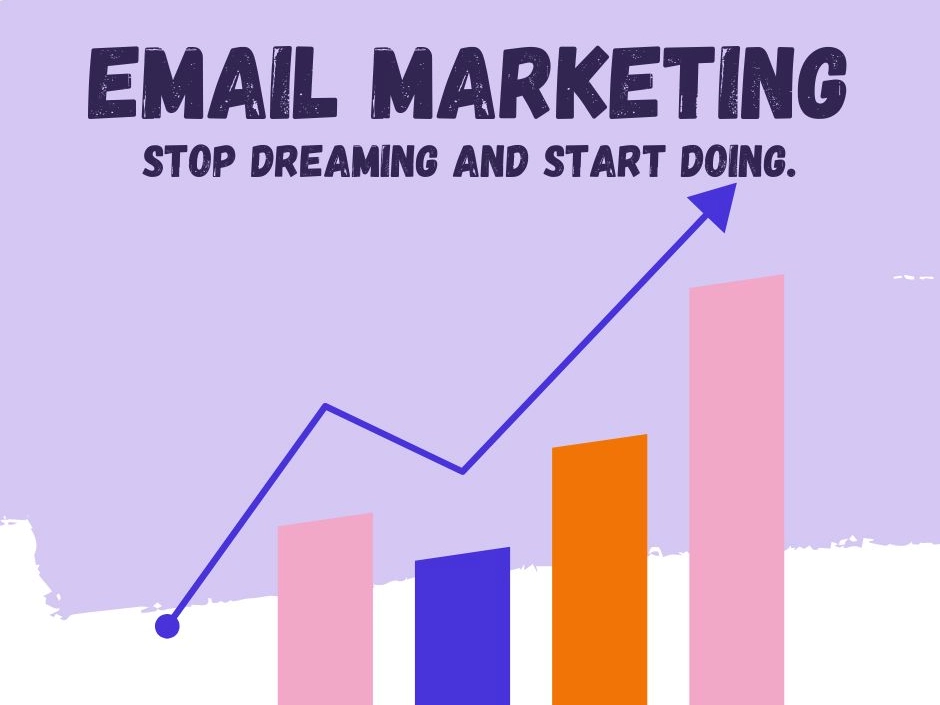
The future of email marketing is bright! As we look ahead, staying abreast of emerging trends is crucial for maintaining relevance and effectiveness. Here are some key areas that are likely to shape the future of email marketing journeys:
- AI-powered Personalization: Artificial intelligence (AI) is poised to revolutionize email marketing by enabling hyper-personalization at scale. AI algorithms can analyze vast amounts of customer data to predict individual preferences and behaviors. This allows marketers to craft highly targeted email experiences that resonate deeply with each subscriber, increasing engagement and driving conversions.
- Interactive Content and Micro-experiences: Static emails are a thing of the past. The future lies in interactive content and micro-experiences embedded within emails. Imagine polls, quizzes, or product configurators that allow subscribers to engage directly with your brand within the email itself. This level of interactivity can significantly boost engagement and provide valuable customer insights.
- Focus on Privacy and Security: With growing concerns about data privacy, email marketing needs to adapt. Subscribers are demanding more transparency and control over their data. The future will see a rise in privacy-centric email marketing practices, with a focus on obtaining explicit consent and providing clear opt-out options. Additionally, robust security measures will be essential to protect subscriber data and build trust.
Integration with Other Marketing Channels
Think omnichannel! For maximum impact, integrate your email marketing with other marketing channels. By weaving email marketing together with social media, content marketing, and PPC, you can create a seamless and cohesive customer journey that reinforces your brand message across all touchpoints.
1. Craft cross-channel narratives! Develop multi-channel campaigns that tell a unified brand story. For instance, tease an upcoming product launch in your emails and then amplify the message across social media channels.
2. Unleash the power of data! Ensure seamless data integration between your email marketing platform and other marketing channels. This allows you to personalize your marketing efforts across all touchpoints, delivering a more relevant and engaging brand experience for your audience.
3. Speak with one voice! Ensure consistent messaging across all your marketing channels. This reinforces your brand identity and cultivates a sense of trust and familiarity with your audience.
Conclusion

Email marketing continues to reign supreme! While social media and other channels rise in prominence, email marketing remains a powerful tool for directly engaging with your audience and fostering long-term relationships.
Unleash the power of email marketing! By understanding the customer journey, weaving in personalization and automation, and embracing the latest trends, you can craft email campaigns that resonate with subscribers and drive significant business results.
This guide serves as a roadmap, but remember, the journey to email marketing mastery is continuous. Embrace a culture of experimentation, test relentlessly, and adapt your strategies based on data and insights.
As you refine your approach over time, your email marketing efforts will blossom into powerful tools for cultivating enduring customer relationships and achieving digital marketing success. So, take the first step today and embark on your email marketing journey!

